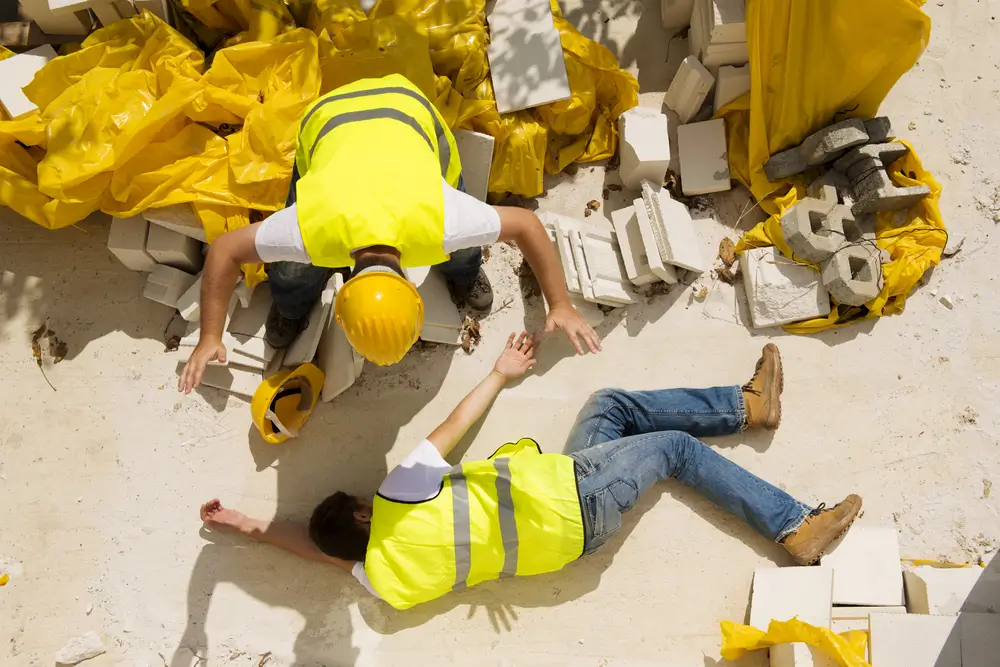⚠️ Concrete & Masonry Safety Risks
Concrete and masonry work is essential for building strong foundations, walls, and structures. But this type of work also comes with serious risks. Workers in these trades face some of the highest injury and fatality rates in the construction industry.
Unlike many other jobs in construction, concrete and masonry often involve physically demanding tasks like lifting heavy blocks, working on uneven surfaces, and handling powerful tools. Workers are exposed to sharp edges, wet cement, unstable forms, scaffolding, and hazardous dust, each posing a unique danger if not handled carefully.
These jobs are not just hard on the body, they are also high-pressure and fast-paced. Teams often work under tight schedules, outdoors in all weather, and sometimes at great heights. One small mistake or missed safety step can quickly turn into a serious injury or even a fatal incident. That’s why it’s so important to look closely at the injury trends and understand how to make these work environments safer.
Nonfatal Injury Rates (2023)
Quick view
Annual Deaths in the Sector
Snapshot (2023)
⚠️ Most Common Hazards
Falls
- Leading cause of both deaths and serious injuries
- Often occur from scaffolding, ladder use, or collapsing walls
- Over 30% of deaths in concrete and masonry involve a fall
Struck-by or Crushed
- Workers may be hit by falling blocks or bricks
- Structures may collapse during curing or placement
- Moving machines or forklifts can also cause injuries
Musculoskeletal Injuries
- Repetitive motion and heavy lifting lead to chronic back, shoulder, and joint pain
- Sprains, strains, and overexertion are common
- Concrete and masonry workers are among the most affected trades for physical pain
Chemical Exposures
- Wet cement can cause serious skin burns
- Exposure to silica dust can damage the lungs
- Eye irritation and dermatitis are frequent issues
Nonfatal Injury Patterns
Each year, over 28,000 workers in the concrete and masonry trades experience a job-related injury or illness. That’s more than 10% of the workforce, which is estimated at 250,000 workers.
Most Frequent Injury Types:
- 👷♂️ Overexertion and sprains
- 🩸 Cuts and lacerations
- ⚠️ Slips, trips, and falls
- ☣️ Chemical burns
- 🔁 Repetitive motion disorders
Lost Workdays and Productivity Impact
When someone is injured, it’s not just painful it often means missing work. Here’s how concrete and masonry compare to national averages:
Bars show relative time-loss vs. a 1× baseline (U.S. average).
Key Risk Categories at a Glance
Concrete and masonry work exposes workers to multiple overlapping hazards. Here’s a breakdown of the most common risks:
Falls
Scaffold collapse, ladder accidents, falls from height the leading cause of death in masonry and concrete work.
Musculoskeletal
Lifting heavy blocks, repetitive motion, twisting frequent causes of sprains, back and shoulder injuries.
Struck-by / Caught-in
Falling objects, moving equipment, collapsing molds or walls major causes of severe trauma.
Chemical Exposure
Cement burns, silica dust inhalation, dermatitis long-term health impacts from daily exposure.
Ergonomics
Awkward postures, uneven loads, long hours with vibration tools lead to fatigue and long-term strain.
Why These Trades Are So Dangerous
Concrete and masonry work often takes place outdoors, in unpredictable environments. Workers deal with challenges like:
-
🧱
Heavy materials like blocks, cement bags, and steel
-
⏱️
Fast-paced timelines and tight deadlines
-
👣
Long hours on feet in awkward positions
-
🏗️
High platforms, narrow scaffolds, or unfinished floors
-
☢️
Hazardous dust, loud tools, and powerful machines
⚠️ It’s no surprise this mix leads to accidents, even for experienced workers.
Final Thoughts
Concrete and masonry construction continues to be one of the most dangerous sectors in U.S. industry. With higher-than-average injury rates, long recovery times, and deadly hazards, this trade demands close attention to safety.
The data shows clear patterns: falls, repetitive injuries, and chemical exposure are major threats. Addressing these with simple equipment, basic training, and smart work practices can make a big difference.
Every injury avoided means more workers going home safely at the end of the day.



